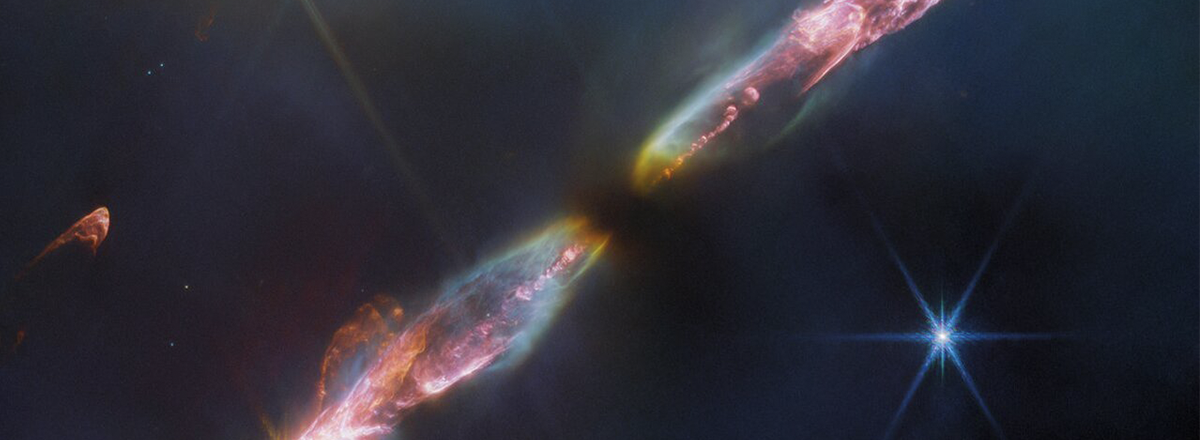James Webb Captures a Spectacular Image of a Young Star's Phenomenal Outburst
Located about 1,000 light-years away in the Perseus constellation, HH 211 is a stellar marvel, and its image was captured using infrared light, revealing a mesmerizing display of colorful streams.

The James Webb Space Telescope has captured a striking image of a young star, exhibiting stunning jets of material, HH 211, erupting from its poles. Situated approximately 1,000 light-years away in the constellation Perseus, HH 211 is one of the youngest and nearest protostellar outflows, making it a captivating subject for Webb's observations.
Herbig-Haro objects, as these luminous regions around newborn stars are known, come to life when the powerful stellar winds and gas jets from these fledgling stars collide with nearby gas and dust at tremendous speeds.
Webb's remarkable image of HH 211 unveils an outflow from a Class 0 protostar, a celestial infant analogous to our Sun in its early years, with just a fraction of its current mass, destined to evolve into a star like our Sun.
This remarkable image, with its higher spatial resolution, is approximately 5 to 10 times more detailed than any previous pictures of HH 211. It displays a series of bow shocks and a narrow bipolar jet that powers them. The central protostar at the heart of HH 211 seems to be in a binary system, evident from the symmetric wiggling of the inner jet on both sides of the star.
In addition to its beauty, this image provides valuable insights into the star's outflow. It revealed that the outflow from HH 211 consists mainly of molecules, as the shockwave velocities are not energetic enough to break them into simpler atoms and ions.

